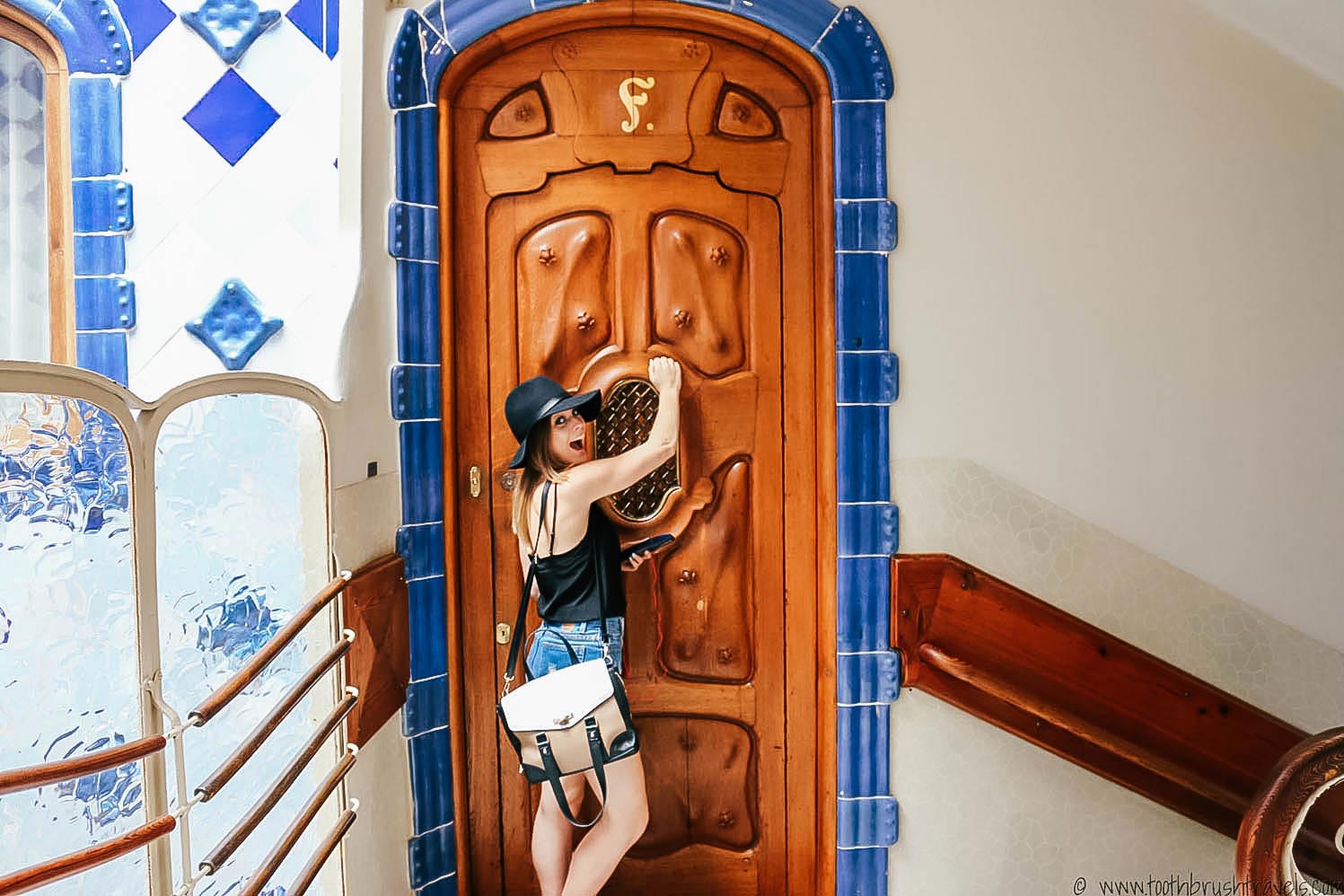Being inside Casa Batlló was something that I didn’t know how much I would love until I was there.
Its journey began back in 1875, but it wouldn’t be the building that went on to inspire millions until 1904.
A building that each week hundreds would flock to and on this day, I was one of them—because I got to go inside Casa Batlló.
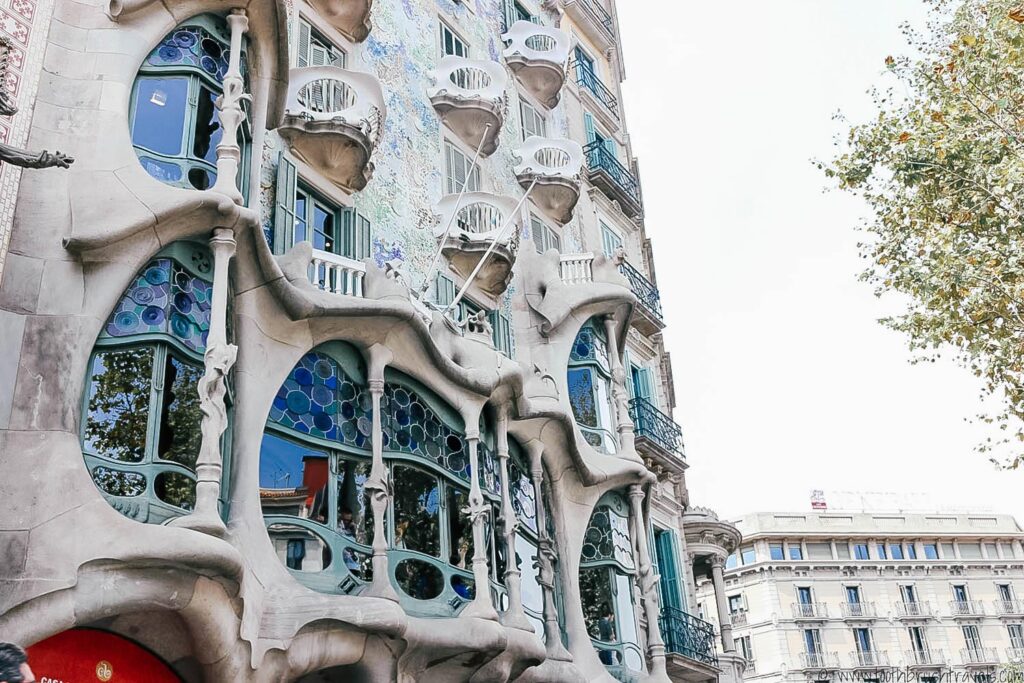
Recognisable by its irregularly shaped colour facade that features an assortment of mosaics and sculptures, Casa Batlló is located on Passeig de Gracia—one of the main streets in the heart of Barcelona. It’s the work of Antoni Gaudi, a Spanish Catalan architect who devoted his life to expressing his three passions; nature, architecture and religion.
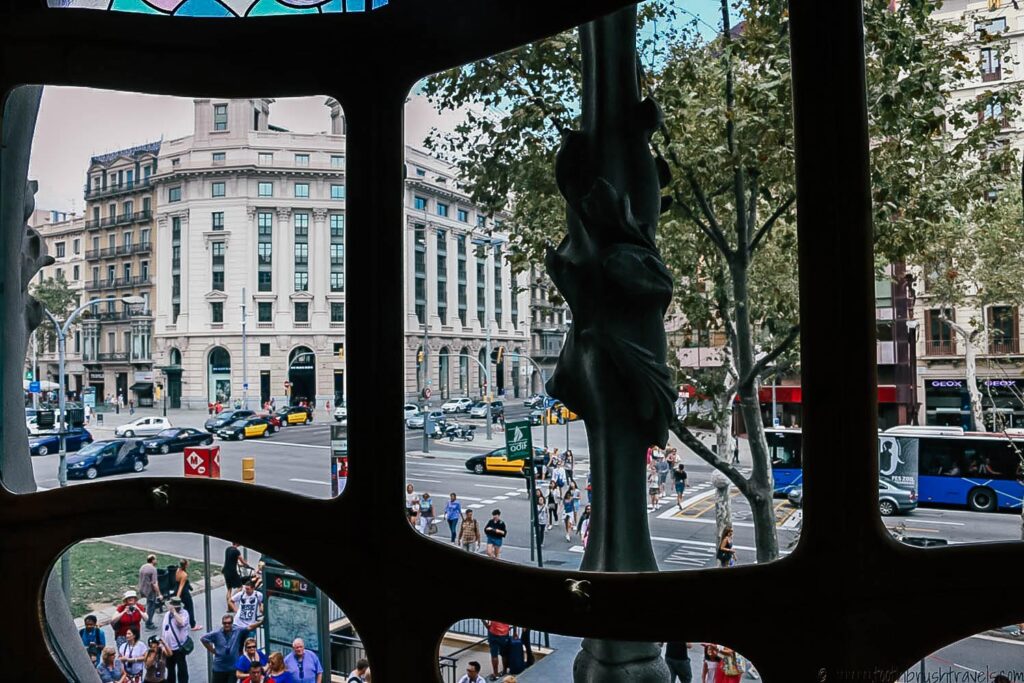
Influenced by the various elements of nature, inside Casa Battló you’ll see the numerous ways that it comes to life. The way Gaudi incorporates light, style and movement, with a design so curvaceous you can almost see the literal representation of waves flowing throughout the house.
I got to go inside Casa Battló during my ride around Barcelona’s city tour, and from the moment I stood outside, my interest was piqued. Gorgeous colours swirled in intricate patterns and the skeletal structure created a fierce edge to something that looked so otherwise innocent. It’s easy to see why it has become an icon and one of Barcelona’s most visited icons.
After paying the entrance fee (€21.50) I received an audio telephone device to listen to as I walked, providing a tour that moved as steadily as I wanted to. The tour didn’t come with headphones as standard, which made juggling a bag, a camera and an audio divide a touch tricky. But if you remember to take headphones with you, this won’t be a problem you’ll face (learn from my mistakes!)

Inside Casa Batlló I walked into the first room, which was the entrance to the stairs that wound up the entirety of the house.
The stairs were wide and with each step we took I felt myself growing more and more captivated by the intricate designs. Because Gaudi’s designs weren’t just visual, they were functional. The stairs didn’t just look pretty and bridge the gap between floors, they made everything feel easier and more natural. For example, on the staircase inside Casa Batlló, the bannister would increase and decrease in width in certain areas. At a first glance, it may look like a statement design, but it was made to fit the shape and contour of your hand as you moved up the stairs.
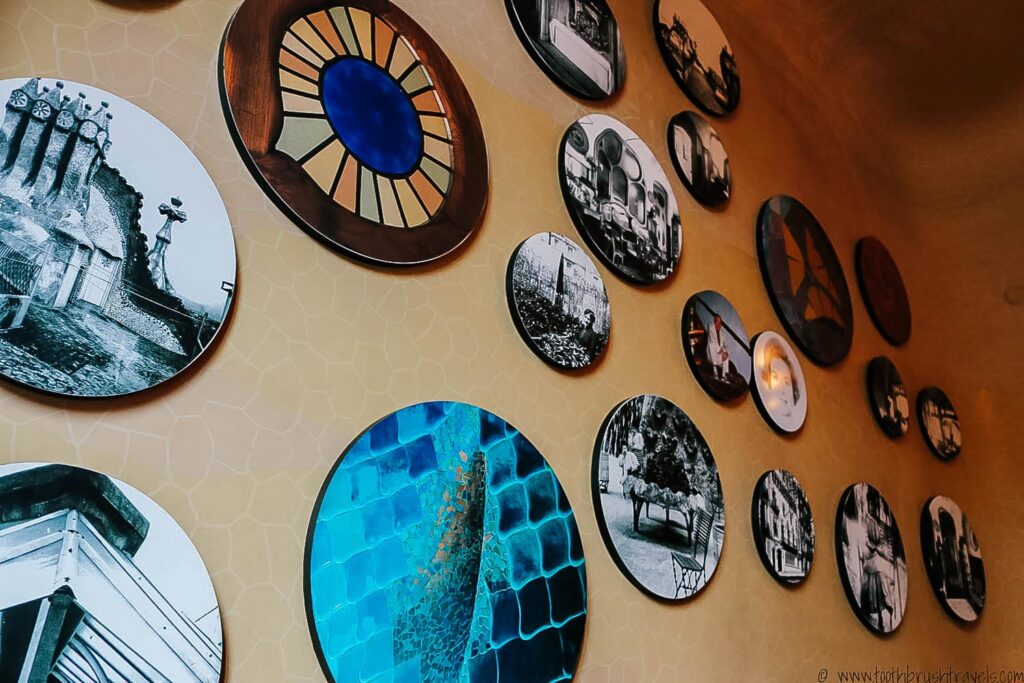
Inside Casa Batlló, you’ll see a lot of these thoughtful touches. Such as in the lightwell in the middle of the house. At the top there is a large skylight and the light pools through the layers of the house, maximising the natural lighting. Many houses in that era were built with skylights, however, Gaudi enlarged Casa Battló’s well and covered it in blue tiles, which deepened in colour the higher up they went, to give the illusion of an equal distribution of light.
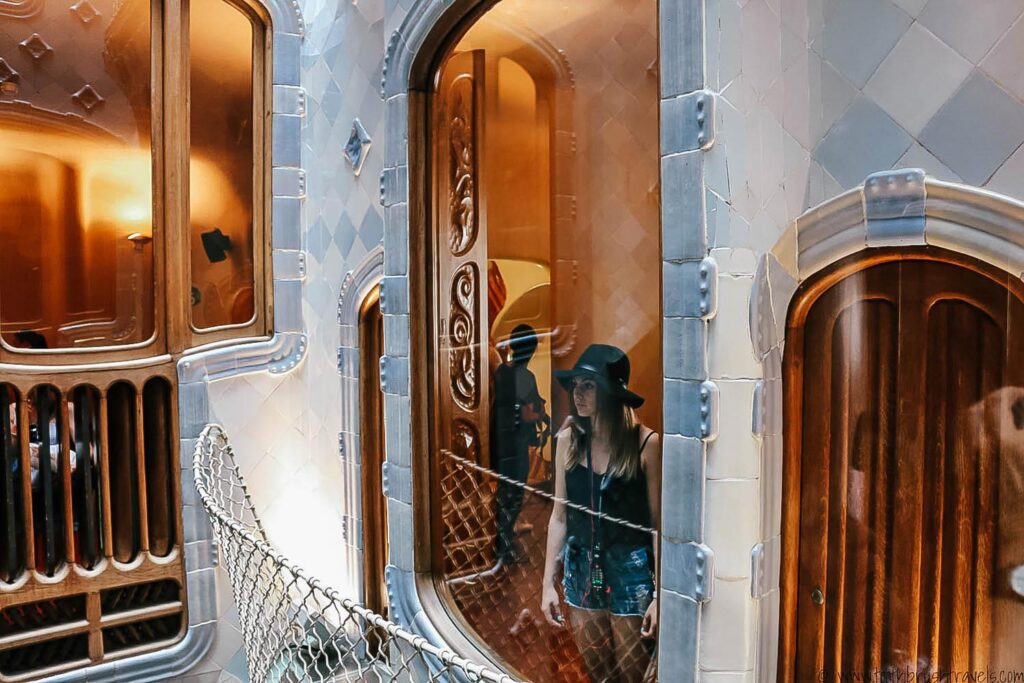
As an accompaniment to this, the windows decreased in size, with the smallest being at the top of the house becoming larger as you moved towards the lower floors.
It’s this imaginative and unique style that you’ll see come to life inside Casa Battló and that is why it’s considered one of Gaudi’s masterpieces.
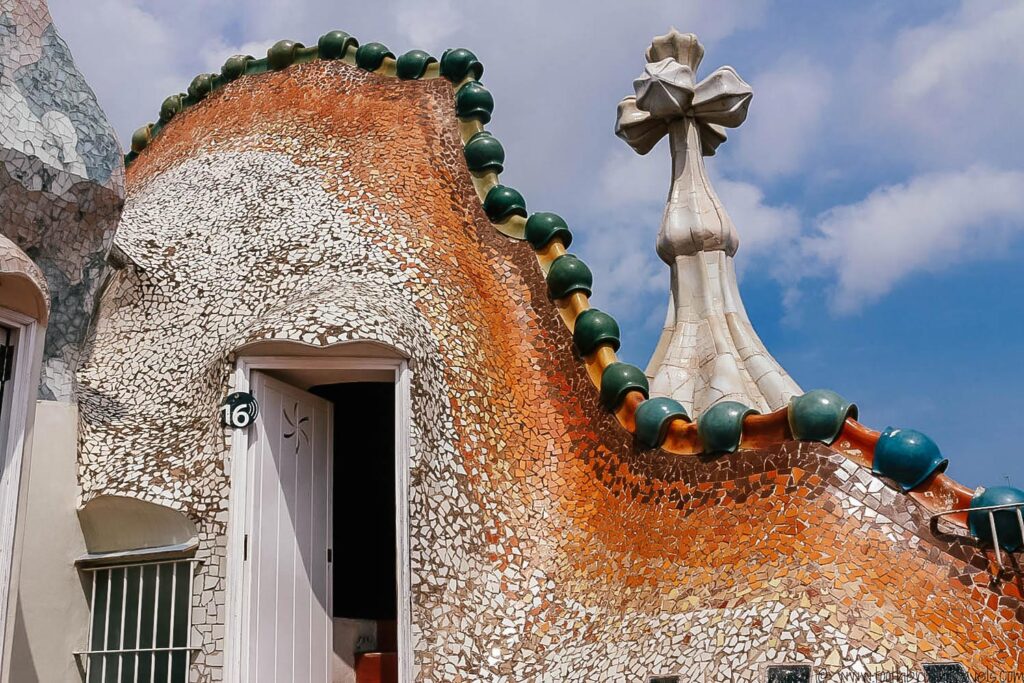
But perhaps one of the most striking features is the roof terrace. Overlooking beautiful structures, Gaudi had designed everything down to the very last chimney.
The skylight had been designed so that raindrops would continuously slide, rather than settle. The curvatures of the roof combined with the cross are believed to be representative of the legend of St George killing the dragon, and the rooftop itself is covered in colourful ceramic tiles with several sculptures.
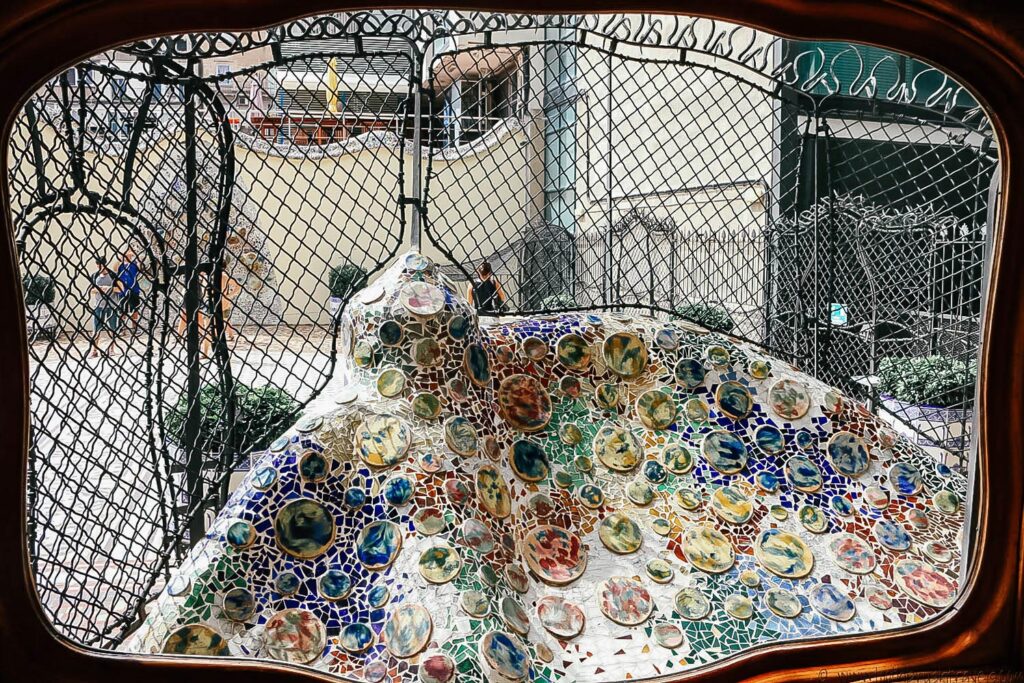
Back inside Casa Batlló, I found that there were certain areas out of bounds to the general public, and I don’t think I’ve ever been so frustrated by limitations. I wanted to see into the apartments behind the giant doors, wander up the closed-off stairs and discover every little secret and story behind Casa Battló. But unfortunately, I couldn’t.
However, that doesn’t take away from the magic. Because inside Casa Batlló, there were numerous rooms that you could tour through and learn about the history and architecture within the building.

With stained glass windows, curved walls and intricate details, it’s clear that Gaudi was a unique individual. A talented and inspirational innovator.
His theatrics and creativity had me excited and intrigued no matter which direction I turned in, eager to explore and uncover the secrets, reason and stories behind each room and I promise you that a tour through Casa Battló is worth every bit of time and effort.

Inside Casa Batlló, and outside to be honest, you can see why it’s a symbol of Barcelona’s rich cultural heritage. It’s an architectural masterpiece and an absolute must-visit when exploring Barcelona.
